Description
Purplish stems are 2-4 ft tall, has 2 inch broad smooth leaves that are distinctly stalked, leaves have clusters of reddish light purple flowers, rarely has seeds, hot aromatic taste at first that turns to cold, distinctive odor.
$4.00 – $901.00
Purplish stems are 2-4 ft tall, has 2 inch broad smooth leaves that are distinctly stalked.
Seeds/ounce – 450,000
Pkt Weight – 1/168
Purplish stems are 2-4 ft tall, has 2 inch broad smooth leaves that are distinctly stalked, leaves have clusters of reddish light purple flowers, rarely has seeds, hot aromatic taste at first that turns to cold, distinctive odor.
| Options | 1 lb, 1 oz, 1/4 lb, 1/4 oz, 1/8 oz, packet |
|---|

The leaves can be used in salads, or to make soup, and the roots can be eaten as a vegetable.
Seeds/ounce – 8,700
Pkt Weight – 1/128
I do not have an image for this product. If you buy and raise this product this year and send me an image of it, I will give you a free pack for next year. Send to” errolahlers@morgancountyseeds.com. Please include your name, address, and product name.
The leaves can be used in salads, or to make soup, and the roots can be eaten as a vegetable.
Seeds/ounce – 8,700
Pkt Weight – 1/128
I do not have an image for this product. If you buy and raise this product this year and send me an image of it, I will give you a free pack for next year. Send to” errolahlers@morgancountyseeds.com. Please include your name, address, and product name.

Beekeepers sometimes use lemon grass oil in swarm traps to attract swarms. Lemon grass oil has also been tested for its ability to repel the pestilent stable fly,[21] which bite domestic animals.
Seeds/ounce – 1,188,800
Pkt Weight – 1/16
Beekeepers sometimes use lemon grass oil in swarm traps to attract swarms. Lemon grass oil has also been tested for its ability to repel the pestilent stable fly,[21] which bite domestic animals.
Seeds/ounce – 1,188,800
Pkt Weight – 1/16
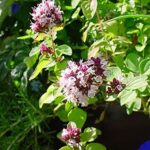
Greek oregano tends to be the most savory and earthy, while Italian is milder. Greek Oregano’s flavor is hot and peppery. Its spicy yet refreshing flavor contributes to Italian, Greek, and Spanish cuisine, as well as Mexican.
Oregano is a perennial growing to 20 inches, with pink flowers and spade-shaped, olive-green leaves.
Seeds/ounce – 125,100
Pkt Weight – 1/128
Greek oregano tends to be the most savory and earthy, while Italian is milder. Greek Oregano’s flavor is hot and peppery. Its spicy yet refreshing flavor contributes to Italian, Greek, and Spanish cuisine, as well as Mexican.
Oregano is a perennial growing to 20 inches, with pink flowers and spade-shaped, olive-green leaves.
Seeds/ounce – 125,100
Pkt Weight – 1/128
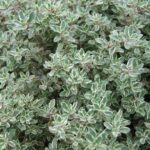
Thyme is best cultivated in a hot, sunny location with well-drained soil.
Seeds/ounce – 170,000
Pkt Weight – 1/168
Thyme is best cultivated in a hot, sunny location with well-drained soil.
Seeds/ounce – 170,000
Pkt Weight – 1/168
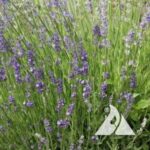
Lavenders flourish best in dry, well-drained, sandy or gravelly soils in full sun.
Seeds/ounce – 26,000
Pkt Weight – 1/128
Lavenders flourish best in dry, well-drained, sandy or gravelly soils in full sun.
Seeds/ounce – 26,000
Pkt Weight – 1/128
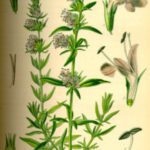
Hyssop is a brightly coloured shrub or subshrub that ranges from 30 to 60 cm (12 to 24 in) in height. The stem is woody at the base, from which grow a number of straight branches. Its leaves are lanceolate, dark green in colour, and from 2 to 2.5 cm (0.79 to 0.98 in) long.[3]
During the summer, the plant produces bunches of pink, blue, or, more rarely, white fragrant flowers. These give rise to small oblong achenes.
Seeds/ounce – 27,150
Pkt Weight – 1/128
The species as a whole is resistant to drought, and tolerant of chalky, sandy soils. It thrives in full sun and warm climates.
27150 seeds/ounce approximately 200 seeds/Pkt
Hyssop is a brightly coloured shrub or subshrub that ranges from 30 to 60 cm (12 to 24 in) in height. The stem is woody at the base, from which grow a number of straight branches. Its leaves are lanceolate, dark green in colour, and from 2 to 2.5 cm (0.79 to 0.98 in) long.[3]
During the summer, the plant produces bunches of pink, blue, or, more rarely, white fragrant flowers. These give rise to small oblong achenes.
Seeds/ounce – 27,150
Pkt Weight – 1/128
The species as a whole is resistant to drought, and tolerant of chalky, sandy soils. It thrives in full sun and warm climates.
27150 seeds/ounce approximately 200 seeds/Pkt
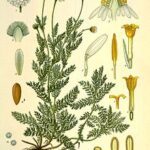
The plant is used to flavor foods, in herbal teas, perfumes, and cosmetics. It is used to make a rinse for blonde hair, and is popular in aromatherapy; its practitioners believe it to be a calming agent to reduce stress and aid in sleep.
Its properties make it appropriate for the treatment of cracked nipples that develop during breastfeeding. It can be applied directly to the skin for pain and swelling. It is not recommended for use during pregnancy as it can cause uterine contractions and miscarriage.
Approximately 189,000 per ounce Pkt about 1000
The plant is used to flavor foods, in herbal teas, perfumes, and cosmetics. It is used to make a rinse for blonde hair, and is popular in aromatherapy; its practitioners believe it to be a calming agent to reduce stress and aid in sleep.
Its properties make it appropriate for the treatment of cracked nipples that develop during breastfeeding. It can be applied directly to the skin for pain and swelling. It is not recommended for use during pregnancy as it can cause uterine contractions and miscarriage.
Approximately 189,000 per ounce Pkt about 1000

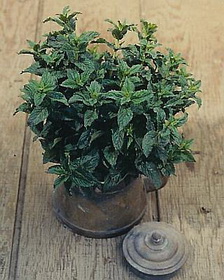

Reviews
There are no reviews yet.